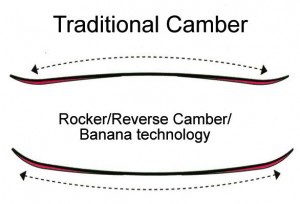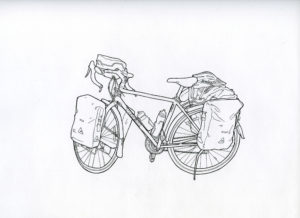Want to Create Something Cool and Innovative? Box Yourself In.
William Shakespeare is widely known as one of the most prolific, and greatest writers in the English language. But consider how he created, and for whom. He wrote specifically for live 16th century theatrical performances, when it was common for audiences to stand up, wander in and out, go find something to eat, yell their displeasure at the actors, or even yell at each other to shut up and listen. It was often a chaotic and rowdy affair.
With these specific audience constraints, Shakespeare wrote at least 37 plays that are celebrated and studied today. He also invented over 1700 words that are actively used in the English language. All kinds of words. “Elbow” for example, was merely a noun until Shakespeare decided to use it as a verb and allow a character in a play to elbow his way into a room. Other words he wholly invented, like the word “puking”. Here it is as written in the play As You Like It.
All the world’s a stage,
And all the men and women merely players:
They have their exits and their entrances;
And one man in his time plays many parts,
His acts being seven ages. At first the infant,
Mewling and puking in the nurse’s arms.
And then the whining school-boy, with his satchel
And shining morning face, creeping like snail
Unwillingly to school.
– William Shakespeare As You Like It, Act 2, Scene 7
In 1960, Theo Geisel (aka Dr. Seuss) accepted a bet with with his publisher Bennett Cerf. Cerf challenged Geisel to write a book using only 50 different words. The result was the acclaimed Green Eggs and Ham, which went on to sell over 200 million copies and is one of the best-known children’s books of all time.
In 1996, the innovative skier Shane McConkey was sitting at a bar in Argentina with some friends complaining that there wasn’t a really good powder ski in existence. He sketched his vision of a powder ski on a napkin which had almost no side cut and no camber. Side cut is what gives skis their hourglass shape and are fantastic for carving on hard, packed snow. Just lean them on edge and they bite into the snow. But they’re terrible in powder. If you design the narrowest part of the ski to be directly underfoot, in soft powder you sink.
The other change he sketched on that napkin was to reverse the camber. Camber is…, well how about a visual to explain it. See here:
Traditional camber creates a tendency for the ski tip to dive in deep powder. And if your tip dives in deep powder you’re likely to fly over the handlebars on your face into the mountain. Instead, skiers had to lean back uncomfortably to keep their tips from diving. Reverse camber allows a skier in powder to center his weight comfortably on the ski, providing more control.
While designing the ski, McConkey borrowed from water skiing. In his mind, powder and water were similar in that they were dimensional. In powder you ski in the snow, not on top of it. He simply imagined using a water ski in deep powder. That ski he sketched on a napkin took two years to be produced. As he describes, “Over the course of the next two years I would talk to people about how cool it would be to have skis with decamber and reverse side cut specifically for powder. Almost everyone I mentioned the idea to would either laugh or politely smile.”
A lot of presentations are boring. Amiright? The speaker drones on while staring at his pie charts with his back to the audience. Some of the most exciting and innovation presentations have come as a result of practicing PechaKucha. In Japanese, PechaKucha literally means “Chit Chat.” It’s a style of presentation in which the presenter gets exactly 20 slides, to deliver in 20 seconds each, for a complete 6 minute and 40 second presentation. Oh, and the slides auto-advance in exactly 20 second increments. That will make you tighten things up, and practice. And practice.
Shakespeare wrote to entertain a loud, rowdy, and distracted live audience. Theo Geisel attempted to write an entertaining book using only 50 words. Shane McConkey designed a ski to only be used in very specific snow conditions. PechaKucha exists to kill boring presentations.
These are all examples of using constraints to create innovation. According to Stanford Professor Bob Sutton, “Research on creativity and constraint demonstrates that, when options are limited, people generate more, rather than less, varied solutions — apparently because their attention is less scattered.”
Innovation isn’t rocket science. It can be deconstructed and learned by anyone. Try our course Out•Innovate the Competition to build measurable innovation in your workplace.
- ____________________________________________________

Last summer, my son and I bicycled across America with two other dads and their teenagers. We published a new book about it called Chasing Dawn. I co-authored the book with my cycling companion, the artist, photographer, and wonderful human jon holloway. Buy a copy. I’ll sign it and send it to your doorstep.




 Shawn Hunter is President and Founder of
Shawn Hunter is President and Founder of